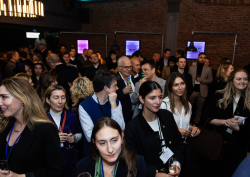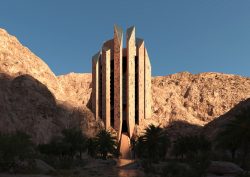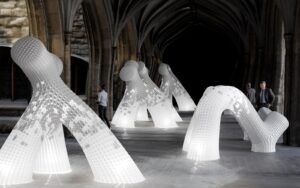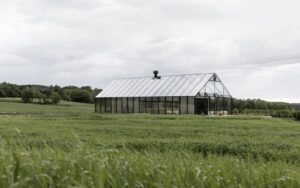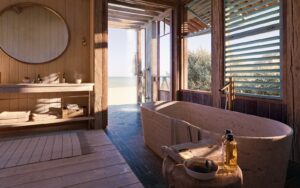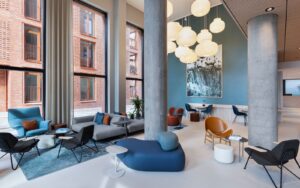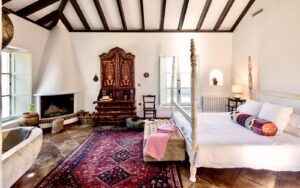In pursuit of wonder – the future of the luxury hotel industry is written in the difference between visiting a place and experiencing a destination. Samer Charara, Woods Bagot Principal and Dubai Studio Chair, explores why hotels are leaving behind escape in favour of experience…
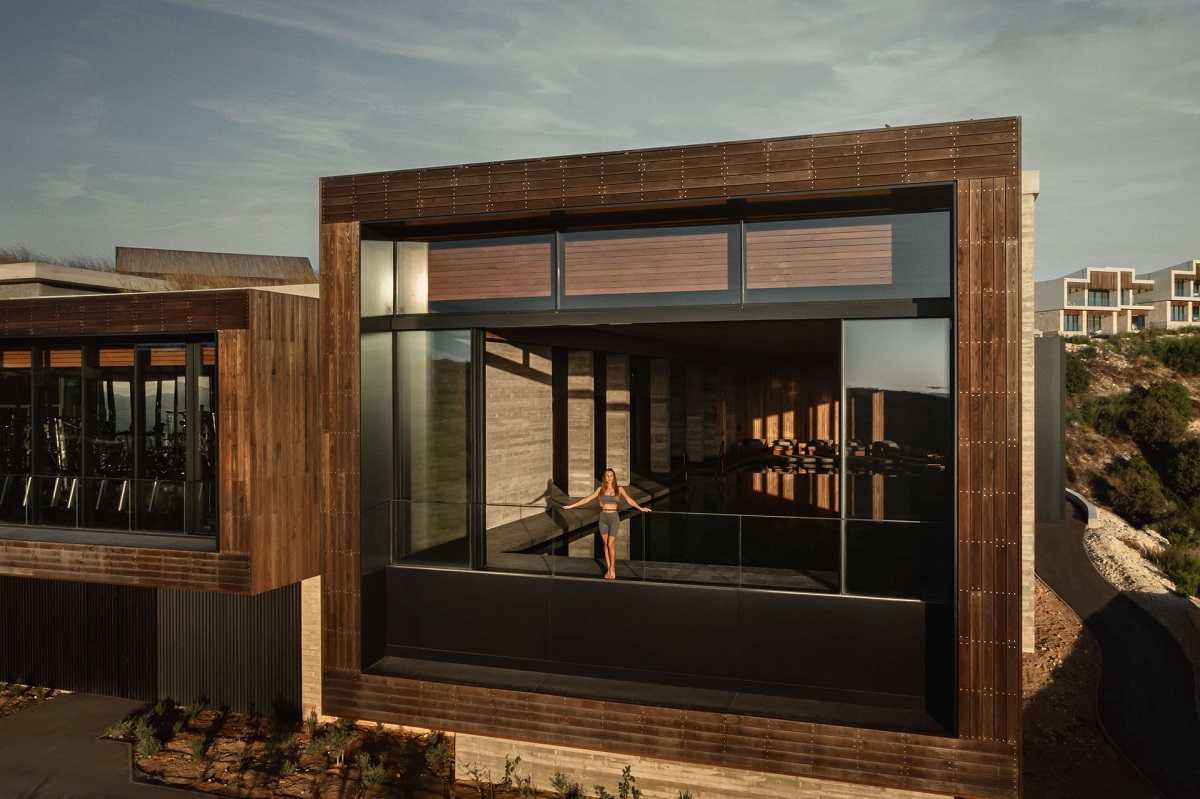
In his role at Woods Bagot, Charara has worked on The Londoner, the recently-completed Minthis Hills, 25hours Hotel One Central Dubai and many other hotels and hospitality projects. Drawing on all this experience, Charara talks us through the changing face of luxury in the industry – looking at how the definition of luxury has changed as designers, architects and guests step forward in pursuit of wonder…
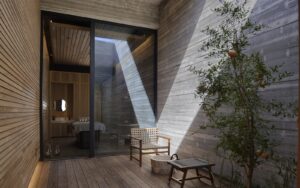
Instead of the rootless escapism that has defined travel’s last decade, a rising craving for connection through first-hand experience indicates the turning of a new leaf – we’ll settle for nothing less than pure wonder. This shift means that today’s definition of the ideal guest experience is deeply embedded in a genuine understanding of place. For designers, this has sparked a quiet renaissance. From delivery to detail, the age of the experiential, culturally connected, lifestyle-focused hotel is here, and with it comes new standards for luxury.
Identifying a change in appetite, 2020 saw travellers taking ‘revenge’ against lost time during the pandemic by booking trips abroad. Evocatively termed ‘Revenge Travel’ by the media, this continued behaviour has bolstered global tourism to the point that it’s expected to reach approximately 80 to 95 percent of pre-pandemic levels this year – with the Middle East and Europe predicted to meet pre-pandemic visitor volumes by year’s end. But the real seeds of change lie in the type of trips travellers are booking. A global surge in journeys to culture capitals, a new wave of interest in wellness retreats, and a spike in demand for outdoor destinations beyond just beaches and mountains, mark a subtle change in appetite – we’re leaving behind escape in favour of experience.
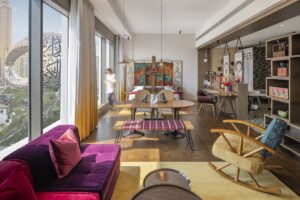
Image credit: 25hours Dubai / Woods Bagot
The preference for experience is reflected in the way global retail consumer habits continue to lean from the possession of objects to the creation of memories, indicating a growing preference for access over ownership. With 72 percent of millennials reporting that they’d like to increase their expenditures on experiences in the future, it’s clear that the definition of modern luxury is shifting to become more about ‘being’ than ‘owning’ – we’re choosing stories over souvenirs. ‘Being’ happens in place. Where objects are symbols of status, experience is born from context – a product of the sights, sounds and smells of the time in question. Aware that context is key, designers looking to create a successful hotel must make decisions that provide travellers with an authentically personal connection to the destination that binds them with the surroundings, culture, and people. In short, they must use storytelling to create genuine immersion in place.
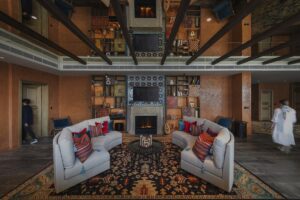
Image credit: 25hours Dubai / Woods Bagot
25Hours Hotel Dubai One Central had a clear brief – capture the essence of the city. Encapsulating a place as futuristic as it is ancient, saw designers deliver a concept that weaves nomadic Bedouin and Hakawati traditions back into modern life. Walking through the double-volume lobby, guests are greeted by the ‘Fountain of Tales’ – a colossal fountain with seating spaces and bookshelves featuring over 5,000 books – before spilling out to discover treasures from local artists throughout the space and beyond.

Image credit: 25hours Dubai / Woods Bagot
By designing moments that allow travellers to walk in the shoes of the hotel’s nomadic antecedents, 25Hours Dubai facilitates a connection to the past that leads to an altered perspective in the present. Genuinely experiential and steeped in stories and culture, a stay here is immersive – travellers will leave feeling truly connected to Dubai city.
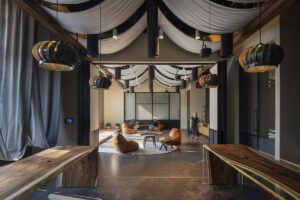
Image credit: 25hours Dubai / Woods Bagot
The pursuit of wonder is driven by our desire to encounter the remarkable. Sparked by a change in perspective, wonder is a culminating moment arrived at from a series of experiences. Savvy designers can cultivate this feeling by deliberately layering experiences in ways that uses the user journey to create narrative, allowing guest encounters to ebb and flow naturally instead of attempting to surprise at every step.
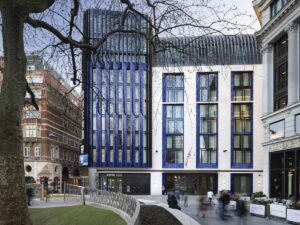
Image credit: the Londoner / Woods Bagot
A royal blue beacon in Leicester Square, The Londoner draws the eye with a façade that incorporates the work of artist Ian Monroe – a light-shifting, 15,000-terracotta-tilestrong nod to the area’s manufacturing history. Aware of its position at the intersection of four distinct neighbourhoods, the hotel is careful to complement its setting without overpowering it – reacting to its surroundings to create a contextual landmark.
From approach, visitors are drawn into the world of the hotel through layers of carefully designed experience. Some might discover a trio of guest-only rooms called The Residence that, behind a secret door, includes The Whisky Room. Others might venture higher to discover awe-inspiring views of Leicester Square, Trafalgar Square or the National Gallery. Whether with whisky, a view or with the building itself, The Londoner layers experiences in ways that create a myriad of chances to experience wonder.

Image credit: Jumeirah-Al-Naseem / Woods Bagot
The return to place through layered experience opens our understanding of luxury up to include deliberate reconnection with our natural environment. Completed in 2016, Jumeirah Al Naseem is an early example of this change. The beachside hotel reflects its unique geographic location by extending it. This decision creates a public space that connects with neighbouring buildings to form over three kilometres of waterways that continue from the water’s edge.
Jumeirah Al Naseem takes every chance to connect visitors with the sea and its pools. Rooms are beach-facing and have extended balconies that ensure the view and elements can be soaked in, and the lobby opens out to frame Burj Al Arab and the sea. Complete with 40 traditional abras, the waterways are a cornucopia of secluded moments. Travellers may discover gardens, the Drum Bar, or simply the joy of a private moment cocooned by water and sky.
Minthis Hills takes up Jumeirah Al Naseem’s mantle of returning travellers to nature via its sensitive integration into the landscape. Nestled along the natural contours of the land in Pathos, Cyprus, every villa has been positioned to maximise views, frontage and privacy. Carefully designed to preserve and enhance the surrounding features, the project includes the restoration of a 12th-century monastery and a design philosophy that takes influence from Cypriot architecture, light and landscape.
Luxury today is entwined with the art of showcasing our environment, which in turn speaks to our need to protect and preserve the natural world. Once misunderstood to be in opposition to luxury, sustainability is a driving force behind its redefinition: if the very essence of luxury hinges on timelessness, enduring desirability, and scarcity, then the preservation of the natural world is an unignorable asset.

Image credit: Minthis Hills / Woods Bagot
Sustainability doesn’t sacrifice experience. As seen in Minthis Hills, consideration of orientation, ventilation and thermal comfort will negate the need to totally rely on air conditioning (or heating). Similarly, embracing smart technologies like virtual concierge and biometrics reduces energy consumption and can be combined with renewable energy generation – like solar and water recycling – to seamlessly reduce a hotel’s carbon footprint.
More outwardly, the demonstration of sustainable practice in a hotel meets a growing demand for transparency. With 53 percent of travellers more determined to travel sustainably than they were a year ago, hotels must make clear changes.
The pursuit of wonder is a race back to ourselves. An experience that allows us to spend time differently, wonder breaks us out of our routines and into a new perspective. In a world struggling with its own wellness, we’re returned to a state capable of joy and delight. For a secondless second, we take in our environment from an unfettered perspective – travellers in the purest sense. 25Hours Hotel Dubai, The Londoner, Jumeirah Al Naseem and Minthis Hills are vastly different offerings united by their commitment to place, culture, and layered experience. As luxury evolves to steadfastly include sustainability and preservation, hotel designers are newly tasked with a level of storytelling that surpasses escape to reach experience.
Main image credit: Woods Bagot

